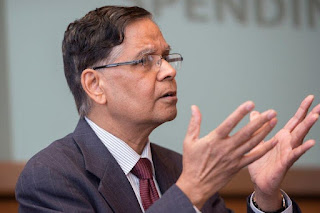In September 2023, Maharashtra's lower court will require electronic filing to improve convenience and speed during court proceedings.
The Indian judiciary, in its quest for modernisation has adopted digital transformation through the introduction of e-filing. This initiative is a major shift that aims to improve accessibility and reduce the backlog of cases in Indian courts. This digital revolution, however, has faced several challenges which have hindered its full success.
In September 2023, electronic filing became mandatory for Maharashtra lower courts in order to improve convenience, speed, and responsiveness during court proceedings. The system is still heavily reliant on physical files due to several glitches.
The e-filing has increased efficiency, reducing paperwork while allowing remote submissions. However, the transition was not seamless. We as lawyers face various issues during e-filing like technical glitches, server outage, difficulty in payment of court fee challans, delays in verification/checking at court etc.," says advocate Jitendra Sawant, a criminal defence lawyer practising in Pune.
"Most importantly the entire e-filing system cannot run without internet. This is a major problem for courts and their premises. Extreme network and internet problems make it difficult to submit certain applications while hearings are in progress. There is also limited technical support and the majority of court staff are not trained to resolve the problems that lawyers face on a regular basis," says Sawant.
As of August 2024, Phase 3 of the E-Courts Mission Mode Project was implemented, and 49,58.821 cases were filed electronically. There are also 1,365 eSewa kendras located in district courts, which will ensure that this technology-based access to justice is improved. E-Sewa Kendras are designed to help bridge the digital gap by giving citizens access to judicial service, particularly those without convenient access to technology.
"E-filing is a game changer for rural areas and businesses with limited resources. It has broken down the barriers that made justice appear distant. Imagine a Maharashtra farmer who is involved in a land dispute. This farmer, with the help of eSewa kendras and eFiling, can now file his case online and track hearing dates by text message. He may also be able attend virtual hearings if necessary. It saves both time and money, and gives them direct access to the justice system that they previously thought was out of their reach.
It has been argued that the push for digitalisation of the filing system is more important than questions about ethics, digital literacy and having a system which can resist cyber attacks without falling victim to malware. Academic research and a collaborative approach can help in the digital transformation. This process involves analysing data protection, evaluating digital literacy among stakeholders, identifying deficiencies in infrastructure, scrutinising algorithmic biased in AI-driven tools, and addressing cybersecurity risks," said Dr Shaista Pehrzada, an associate professor at Ajeenkya DY Patil University in Pune.
By prioritising this area, a collaborative strategy like this can help prevent damage to court systems and, in return, create a more equitable and productive digital justice frame to reduce the gap that exists between theoretical ideals (like Wikipedia's open access style) and practical reality (like Delima’s structured legal database)." Adds Dr Peerzada.
In India, several law schools have started to incorporate e-filing into their curriculum. This initiative is designed to make sure that future lawyers have the skills necessary to use these systems, as they continue evolving and becoming more efficient.
We have included modules on e-filing, as well as other practical procedures in our academic curriculum. Sakshi Kirad is a law student from ILS Law College, Pune. She says that internships incorporating such systems have been given a lot of attention in our field.













